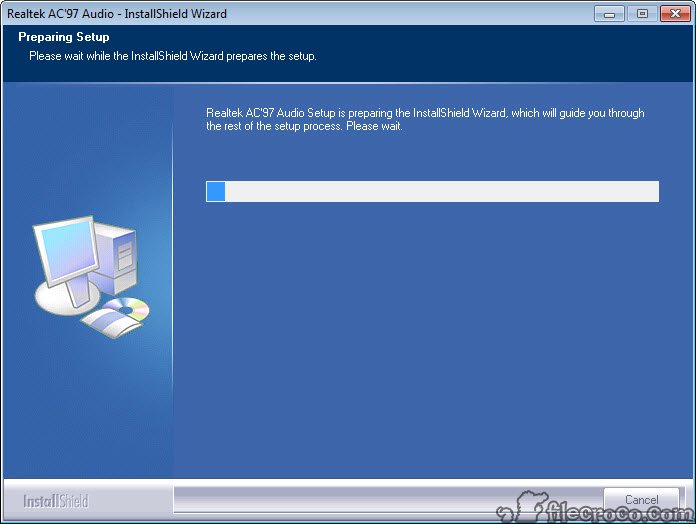- Volume Manager Driver Download Exe Or Zip Files
- Volume Manager Driver Download Exe Or Zip Download
- Volume Manager Driver Download Exe Or Zip Free
Precision 5820 & 7920 Imaging
When imaging the Precision 5820 /7920 systems with Flex bay NVMe drives, they may require additional steps to accomplish a successful image:
Microsoft Deployment Toolkit:
- Make sure to be using the latest version of Windows 10 Assessment and Deployment Kit (ADK).
- The system must be imaged in UEFI mode.
Download the Intel RSTe 5.3.1 driver here:
https://downloads.dell.com/FOLDER04699307M/1/Intel-Rapid-Storage-Technology-enterprise-F6-Driver_TV5DJ_WIN_5.3.1.1019_A03.EXE
- Lenovo Download Manager: Manage BIOS, drivers, software file downloads from Lenovo Support (support.lenovo.com) website.
- Select the appropriate.exe file and click OK. The installer will open and walk you through the driver installation process. If you burn the package onto a CD-ROM or flash drive, it will also be suitable for use with the Windows 'New Hardware Found' wizard in Windows XP and Vista, or for updating drivers in the Windows Device Manager.
Volume Driver free download - Driver Booster, Bluetooth Driver Ver.5.0.1.1500.zip, WLan Driver 802.11n Rel. 4.80.28.7.zip, and many more programs.
Import all drivers from the following directories:
Intel-Rapid-Storage-Technology-enterprise-F6-Driver_TV5DJ_WIN_5.3.1.1019_A03RSTe_f6_iaStorE_win8_64
Intel-Rapid-Storage-Technology-enterprise-F6-Driver_TV5DJ_WIN_5.3.1.1019_A03RSTe_f6_iaVROC_win8_64
- NVMe shows as Disk 1
- SATA is Disk 0
- SD Card is Disk 2
There are bugs in the default UEFI partitioning step in Task Sequences, disable them and use the BIOS steps (which are automatically converted to GPT under UEFI boot):
Step 1:
- Go to Format and Partition Disk (BIOS).
- Select Options.
- Select Disable this step.
- Go to Format and Partition Disk (UEFI).
- Select Options.
- Select Disable this step.
- Go to Add.
- Select Disks.
- Select Format and Partition Disk (change to Disk 1 on dual drive systems with NVMe).
- Select Add Volume (Figure 1):
Figure 1: Add above Volume selection - Select Partition Name of OSDisk.
- Use 99% Size.
- Select Make this a boot partition.
- Select NTFS File System.
- Select Quick Format.
- Enter OSDisk under Variable:
- Select OK.
- Select Add Volume.
- Select Partition name of Recovery.
- Select Partition type as Recovery.
- Select Size: 100%
- File System NTFS
- Quick Format.
- Select Variable Recovery.
- Confirm the Task Sequence has the correct steps (Figure 2):
Figure 2: Task Sequence correct steps - Change Install Operating System to Next available formatted partition (Figure 3).
Figure 3
Back to Top
System Center Configuration Manager (SCCM) 2012
Some changes may need to be made in how SCCM images systems:
- Make sure to be using the latest version of Windows 10 ADK.
- System must be imaged in UEFI mode.
Download the Intel RSTe 5.3.1 driver here:
https://downloads.dell.com/FOLDER04699307M/1/Intel-Rapid-Storage-Technology-enterprise-F6-Driver_TV5DJ_WIN_5.3.1.1019_A03.EXE
Import all drivers from the following directories:
Intel-Rapid-Storage-Technology-enterprise-F6-Driver_TV5DJ_WIN_5.3.1.1019_A03RSTe_f6_iaStorE_win8_64
Intel-Rapid-Storage-Technology-enterprise-F6-Driver_TV5DJ_WIN_5.3.1.1019_A03RSTe_f6_iaVROC_win8_64

Download the Intel NVMe driver here:
https://downloadcenter.intel.com/downloads/eula/27518/Client-NVMe-Microsoft-Windows-Drivers-for-Intel-SSDs?httpDown=https%3A%2F%2Fdownloadmirror.intel.com%2F27518%2Feng%2F4.0.0.1007-x64-Client.zip
Volume Manager Driver Download Exe Or Zip Files
Import the drivers from the following directories:
4.0.0.1007-x64-Client.zip4.0.0.1007-x64-Client
Import the new drivers into the current boot image.
Volume Manager Driver Download Exe Or Zip Download
- NVMe will show as Disk 0
- SATA Disk 1
- SD Card Disk 2
Boot image drivers (Figure 4):
Figure 4
Task Sequence:
Make sure to use 'Next available formatted partition' for the location that Windows will be applied to (Figure 5):
Figure 5

Download the Intel NVMe driver here:
https://downloadcenter.intel.com/downloads/eula/27518/Client-NVMe-Microsoft-Windows-Drivers-for-Intel-SSDs?httpDown=https%3A%2F%2Fdownloadmirror.intel.com%2F27518%2Feng%2F4.0.0.1007-x64-Client.zip
Volume Manager Driver Download Exe Or Zip Files
Import the drivers from the following directories:
4.0.0.1007-x64-Client.zip4.0.0.1007-x64-Client
Import the new drivers into the current boot image.
Volume Manager Driver Download Exe Or Zip Download
- NVMe will show as Disk 0
- SATA Disk 1
- SD Card Disk 2
Boot image drivers (Figure 4):
Figure 4
Task Sequence:
Make sure to use 'Next available formatted partition' for the location that Windows will be applied to (Figure 5):
Figure 5
Make sure to use the proper CAB file for the 5820 / 7920 in the Task Sequence (Figure 6):
Figure 6
KACE Imaging For 5820
The following process should be followed to get 1709 to install via KACE after making a new PE 10 1703 boot disc (PE 10 1709 requires SMB2). K2000 4.0 or later supports SMB2.
Volume Manager Driver Download Exe Or Zip Free
You can download the RSTe 5.3.1 driver here:
https://downloads.dell.com/FOLDER04699307M/1/Intel-Rapid-Storage-Technology-enterprise-F6-Driver_TV5DJ_WIN_5.3.1.1019_A03.EXE
Import all drivers from the following directories:
Intel-Rapid-Storage-Technology-enterprise-F6-Driver_TV5DJ_WIN_5.3.1.1019_A03RSTe_f6_iaStorE_win8_64
Intel-Rapid-Storage-Technology-enterprise-F6-Driver_TV5DJ_WIN_5.3.1.1019_A03RSTe_f6_iaVROC_win8_64
https://downloadcenter.intel.com/downloads/eula/27518/Client-NVMe-Microsoft-Windows-Drivers-for-Intel-SSDs?httpDown=https%3A%2F%2Fdownloadmirror.intel.com%2F27518%2Feng%2F4.0.0.1007-x64-Client.zip
4.0.0.1007-x64-Client.zip4.0.0.1007-x64-Client
KBE (Kace Boot Environment) drivers directory (Figure 7)
Figure 7
Scripted installation (Figure 8 & 9):
Figure 8
Figure 9
Using the driver feed (Figure 10):
Figure 10
